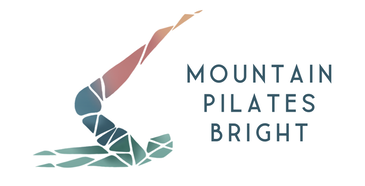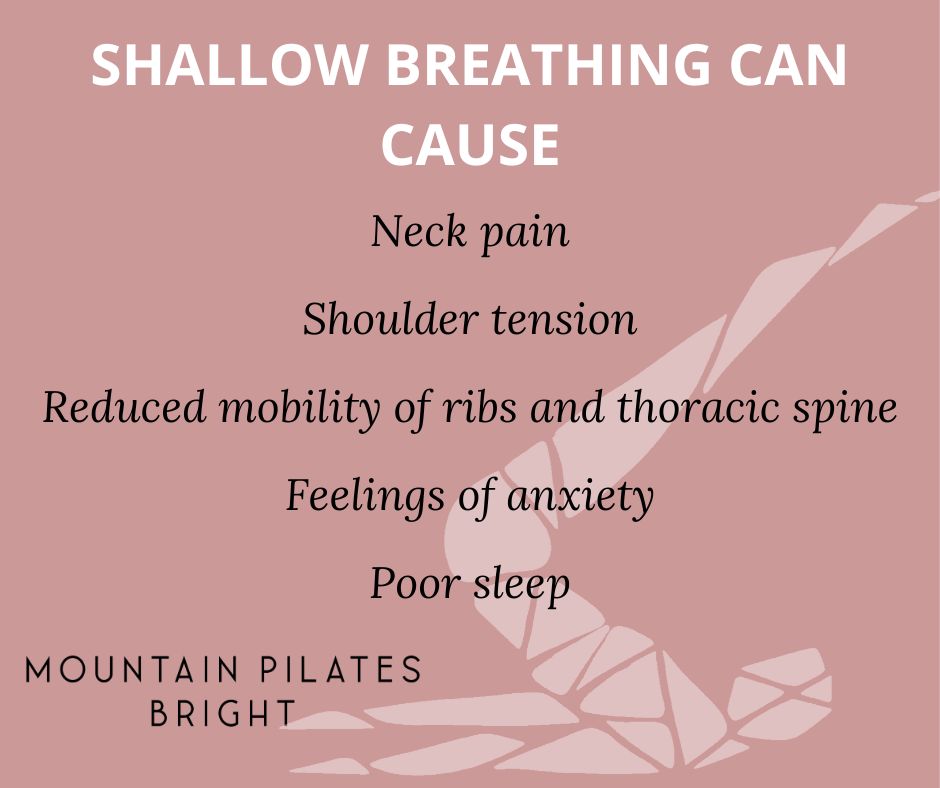|
Obviously, if you’re reading this you are breathing, but are you breathing well? We begin life breathing deeply using the diaphragm muscle to initiate inhalation and exhalation. Often, at some point we lose this ability and start using accessory breathing muscles, such as those around the upper chest, neck and shoulders, which is something I see often in the Pilates Studio. The benefits of diaphragmatic (deep belly) breathing include: ✨ Improved core strength and connection - did you know that the diaphragm is one of our deep core muscles?? ✨ Better pelvic floor function, as the pelvic floor and diaphragm are designed to work in synergy. ✨ Less tension in the neck, shoulders, jaw and abdomen ✨ Activation of parasympathetic nervous system (rest & digest) and all that this encompasses (better sleep, mood, reduced stress) Shallow, accessory muscle breathing can cause: ✨ Neck pain ✨ Shoulder tension ✨Stiffness through ribs and thoracic spine, leading to decreased mobility ✨ Feelings of anxiety ✨ Jaw tension ✨ Poor sleep These are some of the reasons I cue the breath when teaching Pilates. Breathing slowly, with control AND through the nose whenever possible has many (MANY!) additional physiological benefits. Clients often tell me one of the most confusing things about an initial Pilates session is remembering when to breathe in and when to breathe out! - Firstly, just make sure you’re breathing 😂 Seriously, there’s no need to hold your breath, brace or bear down during Pilates. - Our inhale and exhale can help facilitate certain types of movement. An exhale will make it easier to recruit deep core muscles, including pelvic floor, and will encourage stability of the pelvis and lumbar spine. It is also often what we intuitively do when we move our spine into flexion (or rounding the spine forward). - Meanwhile, an inhale can help facilitate opening the chest and front of the body and is intuitively what we do when we move the spine into extension (think about how you may breathe in when you reach your arms up overhead). - Many of you will know that I cue an exhale more commonly (even with extension) as it is often easier to find the support from our core muscles with an exhale breath. (Remember from my earlier post, the diaphragm is a core muscle and works in synergy with transverse abdominus and pelvic floor) - But……there’s always going to be exceptions and a wise person once said “The breath is a tool, not a rule." (Brent Anderson, Polestar Pilates founder). - If you have been doing Pilates (or Yoga) for a while, I encourage you to experiment with different ways of timing your breath with your movement, noticing any changes that occur as a result. - If you are new-ish to Pilates and are finding all this inhaling and exhaling confusing, another wise person once said “When in doubt, breathe out” (me 😂) I'd love to hear your thoughts and experiences with your breathing and if you've noticed any changes or connections with your breath and movement.
And, if you are interested in delving a little deeper into some of the physiological and psychological aspects of breathing, I would recommend you read "Breath" by James Nestor - I have a copy in the Studio if you'd like to flip through it.
0 Comments
|
AuthorAnne, Pilates Instructor and owner of Mountain Pilates Archives
May 2023
Categories |
|
© Mountain Pilates 2021 | Bright - Victoria | Australia | Terms and Conditions | Privacy Policy | Contact Us
|




 RSS Feed
RSS Feed